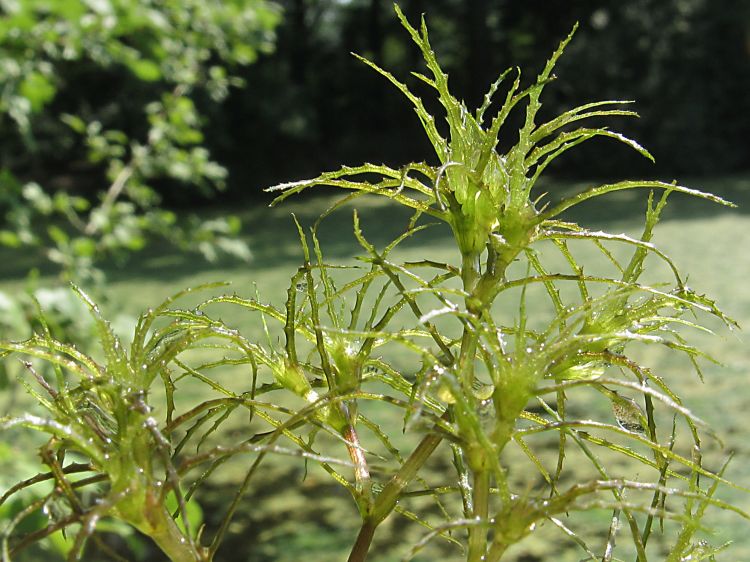Najas minor: Red Data Book of Armenia

VU B 1 ab(iii) + 2 ab(iii)
Category. Vulnerable species. In 1983 it was discovered also in Aparan floristic region. The extent of occurrence is less than 5000 km2, the area of occupancy is less than 500 km2. In the first edition of the Red Data Book of Armenia it was included under Category 1: Endangered species. It is not included in the Annexes of CITES and that of the Bern Convention.
Description. Annual, submerged or floating aquatic plant with many– branched, often dividing, but remaining vital stems. Leaves verticillate, yellowish–green, 0,6–0,9 mm broad, with remote aculeoles at base. Flowers unisexual, with 2 perianth segments, unattractive. Fruits 4 mm long, broadly ellipsoidal, slightly compressed.
Distribution. In Armenia it occurs in Yerevan (Edjmiadzin, Masis) and Aparan (near the village Aghavnadzor, in the left bank of the river Marmarik) floristic regions. EOO is 630 km2, AOO is 12 km2. Locations are 3. The general area of distribution includes West Ciscaucasia, East and South Transcaucasia, Talish, Europe, West Siberia, Asia Minor, Middle and East Asia, Iran, India, North Africa.
Ecological, biological and phytocoenological peculiarities. Grows in lower and middle mountain belts, at the altitude of 800–1700 meters above sea level, in waters. Flowering from June to July, fruiting from July to August. It is hydrophilous plant: pollinated by water. In spite of good vegetative reproduction it is often depressed by large water plants.
Limiting factors. Restricted extent of occurrence and area of occupancy, loss/degradation of habitats.
Conservation actions. No conservation actions. Necessary: monitoring of the population state.
Suggestions
 The Ministry of Environment sent a letter international partners to draw their attention to the real danger of environmental disasters as a result of Azerbaijan's large-scale aggression towards the territory of Armenia
The Ministry of Environment sent a letter international partners to draw their attention to the real danger of environmental disasters as a result of Azerbaijan's large-scale aggression towards the territory of Armenia
 Vicia pisiformis: Red Data Book of Armenia
Vicia pisiformis: Red Data Book of Armenia
 Vavilovia formosa: Red Data Book of Armenia
Vavilovia formosa: Red Data Book of Armenia
 Trigonella capitata: Red Data Book of Armenia
Trigonella capitata: Red Data Book of Armenia
 Trigonella astroides: Red Data Book of Armenia
Trigonella astroides: Red Data Book of Armenia












